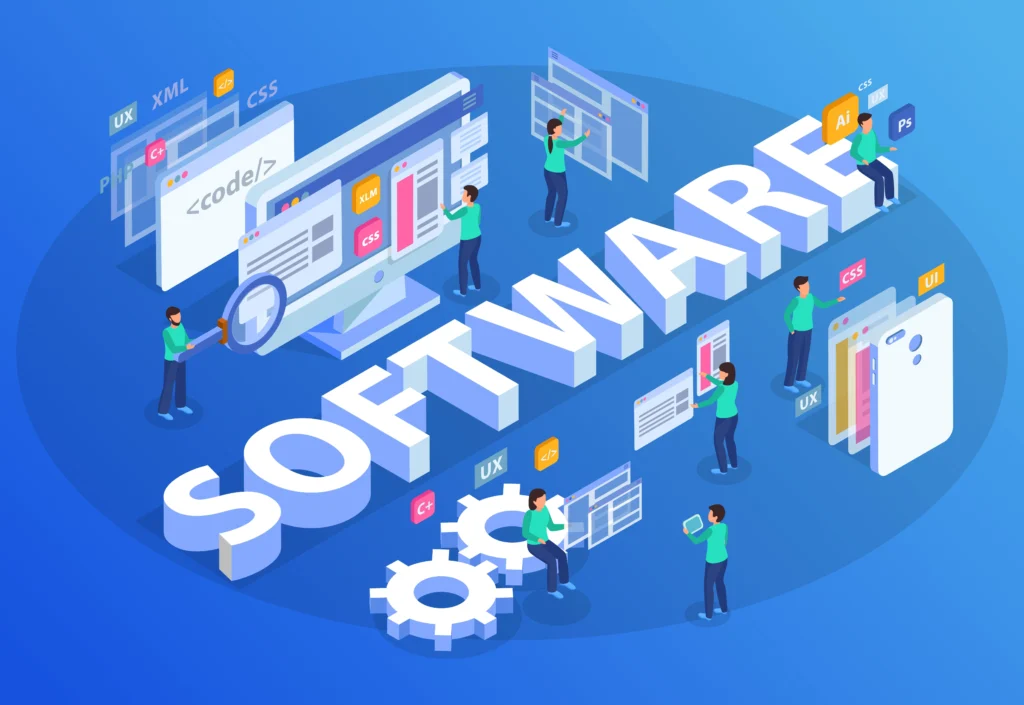The global custom software development services market is undergoing a pivotal expansion, surging from USD 7.52 billion in 2023 toward a forecasted USD 14.73 billion by 2032, at a healthy CAGR of 8.78%. This sustained momentum reflects a paradigm shift: organizations are increasingly rejecting one-size-fits-all software in favor of agile, personalized, and deeply integrated technology ecosystems that align with their unique strategic visions.
Rethinking Software as a Strategic Asset
Custom software development is evolving from a niche IT function to a board-level imperative. Enterprises now require digital systems that do more than automate—they must differentiate, scale, and adapt in real-time. Tailored software empowers firms to embed proprietary processes, safeguard intellectual property, and unlock innovation faster than standard off-the-shelf solutions allow.
Why the Market is Expanding Rapidly
1. Tailored Transformation and Competitive Agility
Digital transformation must reflect each organization’s DNA. Custom-built solutions provide the flexibility to address specific operational challenges, integrate with legacy and modern systems, and deliver contextual experiences across customer and employee touchpoints.
2. Modernization of Business Architectures
Outdated systems are constraining growth. Custom solutions facilitate modernization efforts, particularly in sectors with legacy debt. Enterprises are using bespoke development to move from monolithic systems to microservices-based architectures, increasing resilience and adaptability.
3. Rise of Intelligent Automation
By embedding AI, machine learning, and analytics, custom applications are enabling proactive decision-making, intelligent workflows, and real-time visibility across operations. These capabilities are becoming essential in industries like logistics, manufacturing, and healthcare.
Structural Headwinds
1. Upfront Financial Commitment
Custom development demands significant initial investment, from system design through to deployment and support. This often requires a clear business case and long-term ROI modeling—particularly critical for mid-market players.
2. Maintenance and Evolution Requirements
Unlike plug-and-play solutions, custom software requires ongoing refinement. Businesses must allocate budget and talent for updates, security enhancements, and continuous feature evolution.
3. Systems Integration Complexity
Ensuring that custom applications interact smoothly with ERPs, CRMs, and third-party tools is non-trivial. Integration challenges can extend timelines and inflate project costs if not addressed early in the design process.
Unlocking Future Growth Levers
1. Proliferation of No-Code/Low-Code Tools
The democratization of development through no-code and low-code platforms is broadening access to custom applications. Non-technical business users can now rapidly prototype and deploy functional software with minimal reliance on core development teams.
2. Adoption of Open Architecture Frameworks
Modern development now emphasizes modularity and interoperability. Leveraging open-source frameworks allows teams to build solutions faster, improve maintainability, and avoid vendor lock-in.
3. Expansion of Domain-Specific Accelerators
Vendors are increasingly delivering verticalized custom solutions—pre-configured for sectors like BFSI, retail, and manufacturing. These accelerators reduce time-to-deployment and provide functionality aligned to industry compliance and operational needs.
Segment Landscape and Growth Areas
- Application Development: Custom builds from the ground up for unique business workflows.
- Application Modernization: Upgrading legacy applications to improve performance, scalability, and cloud readiness.
- Application Management: Continuous optimization through support, monitoring, and lifecycle enhancements.
Deployment Architectures
- Cloud-Native: Preferred for flexibility, elasticity, and reduced CapEx.
- On-Premises: Required for regulatory or security-sensitive environments, especially in defense, healthcare, and critical infrastructure.
Customer Profile Trends
- Large Enterprises: Focus on robust integrations, global scalability, and proprietary system development.
- SMEs: Seeking affordable modular systems that improve agility and reduce dependency on rigid vendor solutions.
Sector-Specific Implementations
- Healthcare: EMR enhancements, appointment and treatment automation, and secure health data exchange.
- BFSI: KYC automation, compliance reporting engines, fraud detection platforms.
- Retail: Personalized CX platforms, mobile commerce integration, demand forecasting engines.
- Telecom/IT: Network orchestration, service lifecycle management, and predictive support platforms.
Global Market Movements
- North America: Sustained investment driven by enterprise cloud maturity and customer-centric development strategies.
- Asia-Pacific: Fastest-growing market driven by SME digital adoption, local developer ecosystems, and policy-led digitization.
Market Leadership and Competitive Positioning
Key market players—including Infosys, Capgemini, IBM, Accenture, and Wipro—are reinforcing their custom development portfolios with AI/ML expertise, agile delivery models, and vertical specialization. Boutique firms are gaining traction by offering hyper-focused services and shorter lead times.
Strategic Recommendations for Leaders
- Institutionalize agile development and continuous integration to support evolving requirements.
- Map custom software goals to business KPIs—prioritizing flexibility, innovation velocity, and data utility.
- Develop internal product ownership models to ensure business alignment post-deployment.
- Invest in secure DevOps practices that embed compliance and resilience into the development lifecycle.
Conclusion: Investing in Digital DNA
Custom software development is rapidly becoming a pillar of competitive strategy. In a global environment where speed, relevance, and resilience are paramount, off-the-shelf tools fall short. Organizations that invest in building their digital DNA through bespoke development will command higher customer loyalty, greater operational insight, and long-term strategic flexibility.

